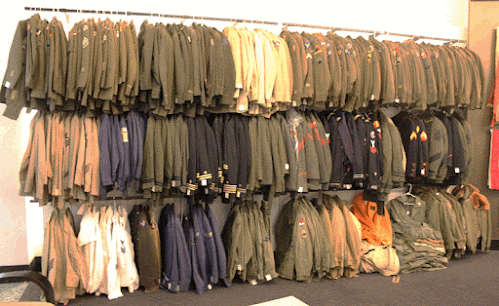A Brief History of British War Uniforms
Have you recently searched about the
history of ww1 British uniforms?
Well, it looks amazing to dress up in a British army uniform but do you know
the about the history that comes with that dress? It could be related to the
design, comfort or reliability. Do not worry you are not the only one who
actually do not have any idea about ww1 and ww2 British uniforms. Well, can always start fresh from their
history.
However, it was not far from the end of the
20th century when the army began to focus on the army uniforms. In the
beginning, they made efforts to match ww1 uniforms with the climate conditions.
During this time they introduced khaki in the Cuban invasion.
Double stitching of the uniform increased
longevity and removable buttons made it easy and efficient to wash it. It was
important to keep the colour of the army uniform deemed to blend with the
background during the war. Resulting khaki become army’s staple colour along
with olive drab.
In 1902 a board meeting was held to review
army uniforms. Resulting, the general order 81 under which:
Ø Blue was eliminated from the army uniform
Ø Replacement of uniform with khaki or olive drabs
Ø Sleeve chevrons become smaller
Ø Gilt was used to dress button
Ø Bronze used for the field displaying the eagle.
Well, some of these changes were delayed
due to the late utilization of the existing, old stock for artillery and
engineers corps. However, the main changes come to the action on April 6, 1917,
when America declared the World War 1 against German.
WW1
British army uniform and equipment
The clothing America army worn during the
First World War was manufactured in England. Therefore both American and
British army uniform look similar to each other. The main aspects of the ww1 British Officer Uniform were:
Ø Pith Helmet
Ø SD Tunic
Ø SD Trousers
Ø Ankle Boots
Ø Long army puttees
The grey back wool tunic worn by the army
in the World War 1 were the same shirt that is worn by them in the nineteenth
century. It was basically a colourless
shirt worn under the dress and called grey-black as it was made using light
grey flannel. The British army was the first army that used P'08 webbing. In 1908 was used as a
hand free mean of carrying essentials like ammunition, water bottle, wash kit
tools and other personal possessions.
Webbing
and Equipment used with WW1 and WW2 British uniforms
There are several webbing and equipment
that are used with WW1 and WW2 British uniforms. Some of them are
Ø Steel helmet (2 ½ lbs app.)
Ø PH anti-gas cape (3 ½ lbs app.)
Ø Respirator
Ø Haversack
Ø Straps belt
Ø Mills Grenade
Ø Cotton SMLE 303 bandolier
During the World War, the British army used
to carry soldier kit that would need in the war field of trenches. The easy
1908 webbing system used to carry around 303 riffle ammunition, knife fork and
spoon, drinking cup, spare clothing, housewife sewing kit etc.
There are several companies who reproduce
ww1 and ww2 British uniforms and
sell to revive history through replicas. People who want them for their
personal collection and visit these companies website to order one.



Comments
Post a Comment